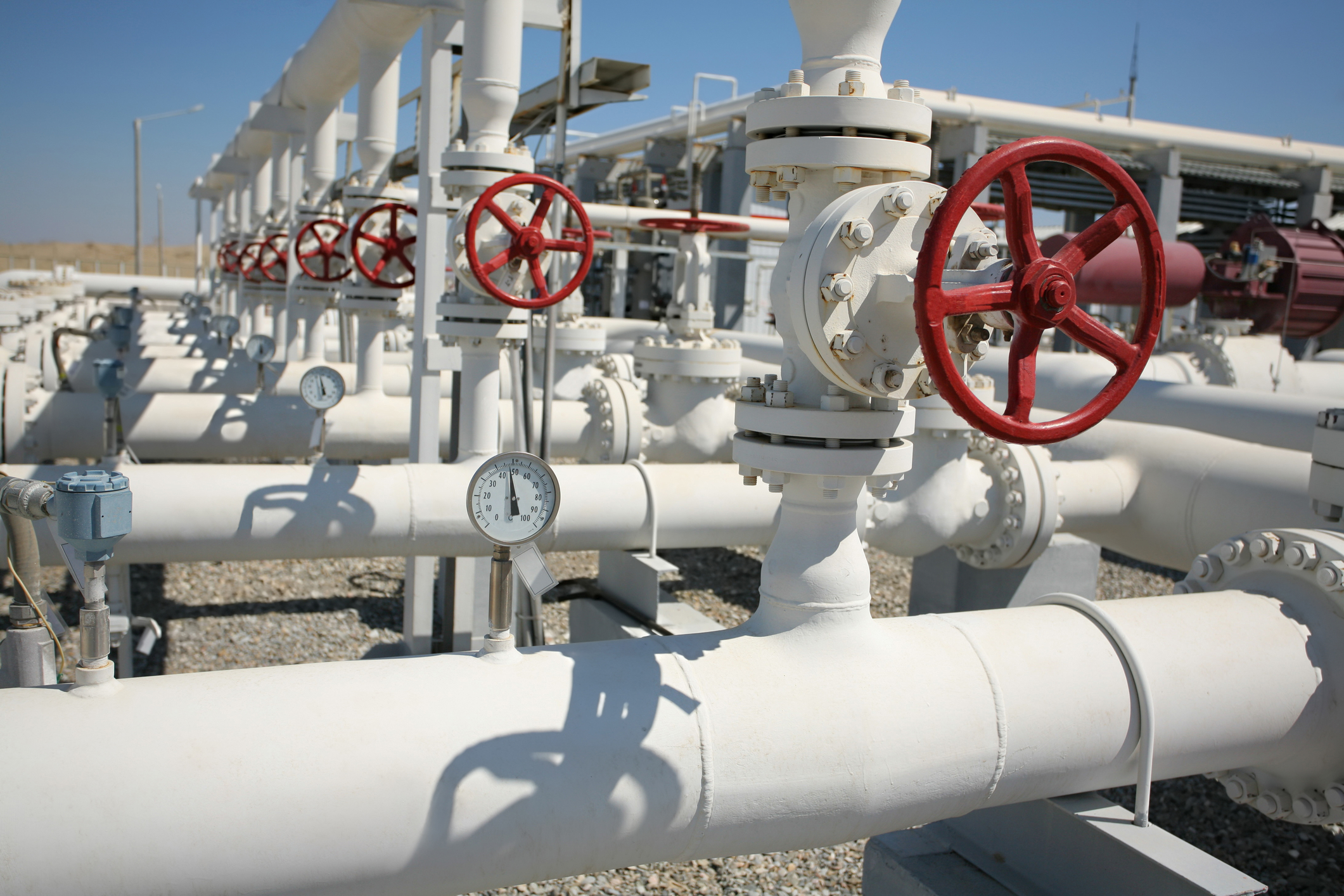From flow measurement technologies to system design considerations, there are many requirements and regulations to ensure accurate custody transfer.
By Gobind Khiani, Valve Engineering Consultant, GAPV Inc.
In process control, repeatability in flow measurement is often prioritized over absolute accuracy. Engineers can tolerate some level of inaccuracy so as long as measurements remain consistent, enabling effective control.
However, accuracy is essential in custody transfer where fluids or gases are exchanged between parties based on precise calculations. Even minor errors can result in significant financial losses.
Example: Custody Transfer in a Pipeline
At Pump Station X, 60,000 gallons (227 cubic meters) of oil flow per minute. A small 0.1% error leads to a daily discrepancy of 2,057 barrels. With oil priced at USD$65-$70 per barrel, this equates to a USD$150,000 daily loss—totaling USD$54.75 million annually. The financial impact can favor either the seller or buyer, highlighting the importance of precision.

Due to the high stakes, custody transfer is strictly regulated and involves taxation and contractual agreements. Various industry standards ensure accurate measurements including:
- American Gas Association (AGA)
- American Petroleum Institute (API)
- U.S. National Institute of Standards and Technology (NIST)
- Physikalisch-Technische Bundesanstalt (PTB, Germany)
- China Metrology Certificate (CMC)
- GOST (Russia)
Maintaining measurement accuracy minimizes disputes and financial risks, reinforcing its critical role in the industry. Custody transfer requires more than just a precision flowmeter—it involves an integrated system that ensures accurate measurement.
Key components include:
- Multiple parallel meter runs
- Pressure and temperature sensors
- Flow computers
- Quality measurement tools (e.g., gas chromatographs, sampling systems)
- In-situ calibration tools (provers or master meters)
- Automation systems
Custody Transfer Flow Measurement Technologies
Only select flowmeters meet custody transfer standards for accuracy and repeatability. The five main technologies are:
1. Differential Pressure (DP) Flowmeters – Used since the 1930 AGA-1 report, known for durability in harsh conditions.
2. Turbine Flowmeters – Gained popularity in the 1990s (AGA-7 standard in 1981) for gas applications due to high accuracy.
3. Positive Displacement (PD) Meters – Ideal for small-diameter and low-flow applications but can cause pressure drops.
4. Coriolis Mass Flowmeters – Modern, highly accurate technology suitable for both liquids and gases.
5. Ultrasonic Flowmeters – Non-invasive, multi-path meters offering precise volumetric flow rate measurement.
Ultrasonic Flowmeters
These flowmeters use transducers positioned upstream and downstream to calculate velocity differences, determining volumetric flow rate. Multi-path configurations improve accuracy by measuring flow at multiple points in a pipe.
Since AGA approval in 1998, ultrasonic meters have been widely adopted for natural gas custody transfers. They support pipe sizes from two to 42 inches and are used across petroleum distribution networks.
Coriolis Mass Flowmeters
Coriolis meters measure mass flow directly, rather than volume. Fluid passing through vibrating tubes creates a twist due to the Coriolis force with frequency changes correlating to mass flow.
Introduced in the 1970s, API approval in 2002 helped establish them for custody transfer. Available in sizes up to 16 inches, they are highly accurate with no moving parts.
Both ultrasonic and Coriolis meters are integral to ensuring precise custody transfer, reducing financial risks and regulatory issues across global industries.
Measurement Uncertainty in Custody Transfer

Custody transfer requires precise flow measurement, where even small errors can lead to financial discrepancies. Total measurement uncertainty is influenced by:
- Meter accuracy
- Piping and installation effects
- Electronic components (e.g., flow computer and A/D converter accuracy)
For instance, a pipe misalignment of less than 1/8 inch (3.2 mm) may be acceptable if concentric, but eccentric misalignment can introduce up to 0.2% error, impacting billing accuracy.
Minimizing Errors
Proper header sizing is crucial, particularly in retrofitting, to maintain performance. Thermowell placement in gas metering should follow AGA 9 guidelines, positioning two to five diameters downstream, though some engineers recommend greater distances for improved accuracy.
To ensure precision, engineers should:
- Avoid upstream disturbances (valves, thermowells, elbows, tees)
- Ensure adequate straight pipe runs
- Place intrusive devices downstream
- Use vibration and noise dampening when needed
In many installations, multiple meters connect to a single header, allowing:
- Independent meter operation
- Use of a master meter
- Maintenance without flow interruption
Flow Provers
Flowmeters undergo calibration via master meters or stationary/portable provers. On-site proving works for pipes up to 42 inches, but larger meters require specialized calibration.
Master meter proving assigns one meter as the reference standard, ensuring accuracy at least four times better than the test meter. The test meter operates in series with the master, with discrepancies used to calculate correction factors.
Accurate proving is essential for financial integrity and compliance, ensuring custody transfer measurements remain reliable.
Planning for Accurate Measurement
Selecting the right flowmeter is just one aspect of custody transfer. The entire system must be carefully designed to minimize measurement uncertainty.
At the core of any custody transfer system is the flow computer, which processes data from sensors—flow, pressure, temperature, and density transmitters— using industry-standard algorithms to determine the precise quantity of gas or liquid transferred. Advanced flow computers can handle up to 10 meter runs or combinations like six runs plus a prover. Many setups include redundant flow computers to prevent operational disruptions.
System Design Considerations
While compact piping saves space, it can distort flow profiles and increase noise, reducing accuracy. To maintain stable flow, adequate straight pipe runs upstream and downstream of the meter are essential. Sufficient space should also be provided for meter access, maintenance, and removal.
One common oversight is lack of space for service vehicles and calibration equipment. The installation area should be strong enough to support permanent and portable equipment. Electrical design is equally critical — meters must be properly grounded and powered with minimal signal interference to ensure accurate measurement.
For installations with a prover, double block-and-bleed valves help prevent leakage that could distort results. Removing entrained gas and air pockets also minimizes inaccuracies, particularly in liquid meters.

Metering Skids
Since custody transfer systems require specialized expertise, many companies opt for pre-engineered metering skids, ensuring seamless integration of instrumentation and flow conditioning. Selecting a reputable skid supplier involves assessing expertise in:
- Flowmeter technologies
- Fluid dynamics and flow behavior
- Proving techniques
- Regulatory compliance
Meter Proving & Skid Design
Liquid custody transfer often requires meter proving under actual operating conditions, either through permanent prover skids or portable provers. Choosing the right skid builder requires a solid understanding of:
- Safety classifications and standards
- Flow measurement requirements
- Operating temperature and pressure
- Flow rate fluctuations
- Meter sizes and installation specs
- Unidirectional or bidirectional flow
- Ambient/electrical noise concerns
- Need for flow conditioners
- Horizontal or vertical mounting
Construction & Calibration
The design of headers, piping, fittings, and interfaces must match the metering system requirements. Integration with flow computers, sensors, and control systems should be clearly defined with protocols like HART or Foundation Fieldbus enhancing diagnostics. Before installation, the site must be graded, prepped, and reinforced. Concrete pads, electrical services, and piping connections should be established before the skid arrives. Upon delivery, the builder handles commissioning, calibration, and training.
Since operation and maintenance require specialized skills, skid manufacturers often provide ongoing support, ensuring long-term accuracy and compliance in custody transfer systems.
The Importance of Expert Partnerships
Custody transfer is a high-precision process that demands a blend of expertise across multiple disciplines. For most operators, the most effective way to design, install, and operate a custody transfer system is to partner with a proven, experienced provider. Whether the solution is built on-site or delivered as a modular process skid, close collaboration between the end user and the system supplier ensures the best outcome for the application.



 Gobind (Gobind N Khiani MEng PEng) has served in engineering management roles for both operating and EPC companies and has received Fellowship in Engineering. He has a bachelor’s degree from the University of Pune in India and a Master of Engineering from the University of Calgary in Alberta, Canada. Currently he is Secretary of CPGCE, Vice Chairman of International Standards Organization, Volunteer at YPAC, GPS, API, PRCI, ASME, ISO and NACE representing Canada.
Gobind (Gobind N Khiani MEng PEng) has served in engineering management roles for both operating and EPC companies and has received Fellowship in Engineering. He has a bachelor’s degree from the University of Pune in India and a Master of Engineering from the University of Calgary in Alberta, Canada. Currently he is Secretary of CPGCE, Vice Chairman of International Standards Organization, Volunteer at YPAC, GPS, API, PRCI, ASME, ISO and NACE representing Canada.